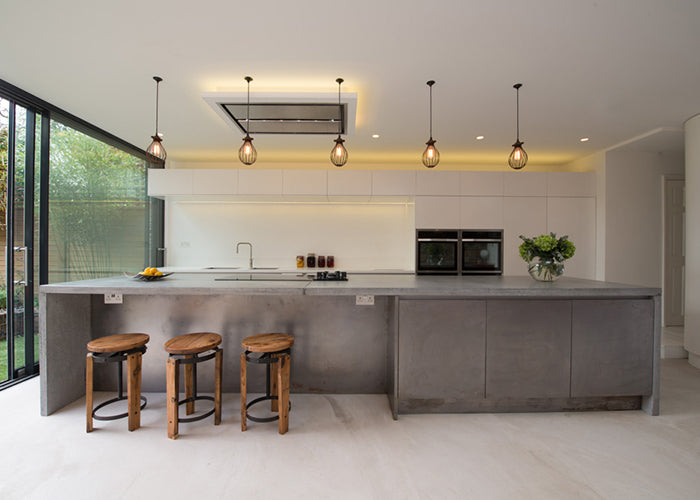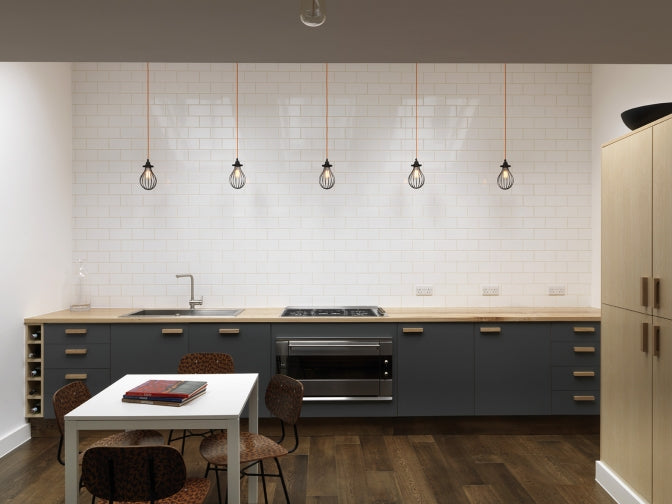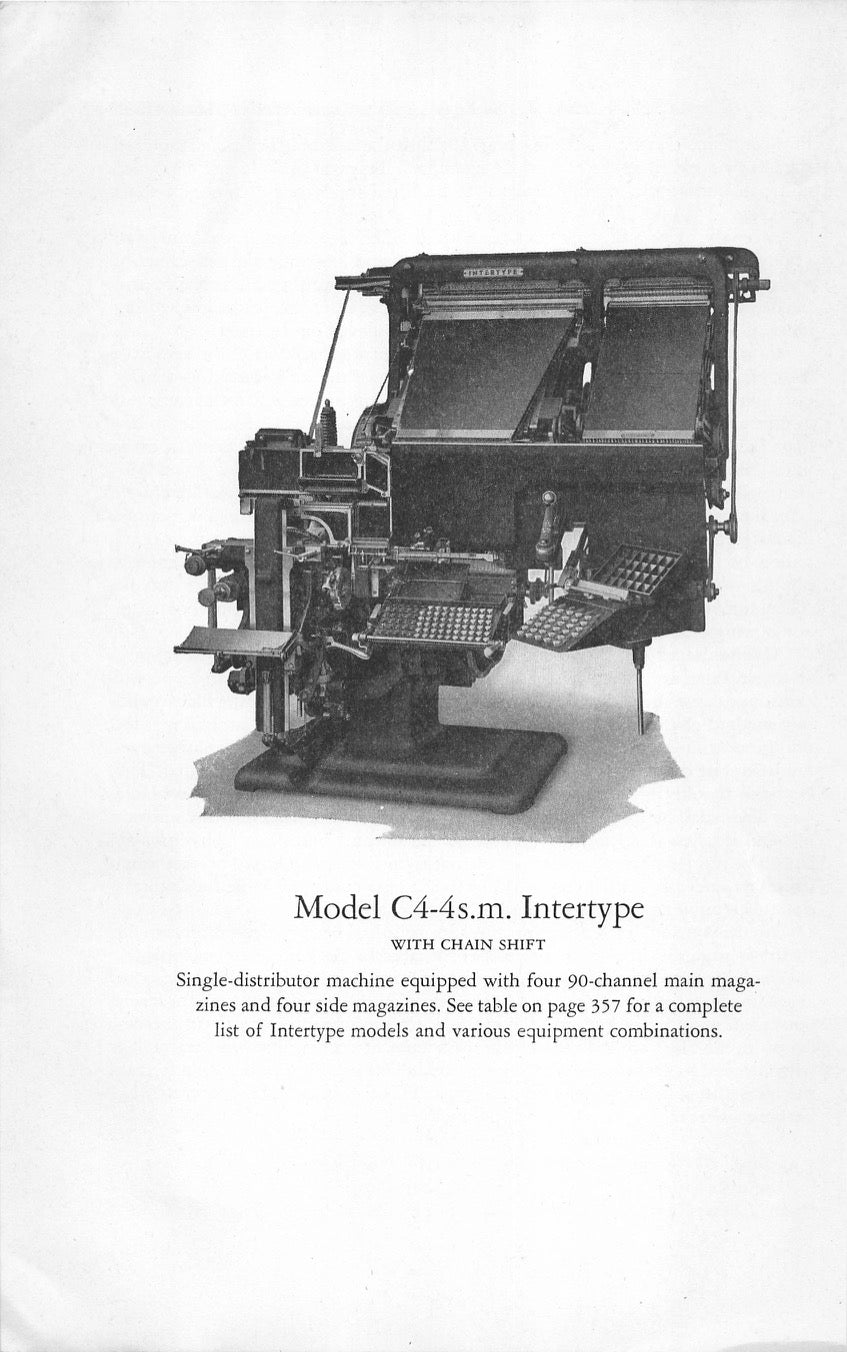There is no 'one size fits all' solution to kitchen lighting because kitchens take many forms. From the narrowest galley kitchen to large open plan rooms incorporating spaces for dining or socialising.
However, if you are creating a kitchen lighting plan, there are some lessons that you can apply to all spaces.
 A kitchen showing various lighting options: natural lights from windows and skylights; recessed spotlights in the ceiling; wall lights above the work surface; integral lights in the cooker hood; and pendant lights over a kitchen table.
There are several options for task lighting. For completely new kitchens, recessed ceiling lights are a good solution. When planning this type of lighting, there needs to be enough sufficiently bright fittings to ensure a good light level on work surfaces. If the recessed lights are adjustable, the light can be directed. Also, if they are dimmable or rows have separate control, this can help meet other lighting requirements for the space.
Potential problems in relation to shadow need to be considered, particularly if there are cupboards above the work surfaces. The effect of the cupboards and a person standing at the work surface is to create a narrow channel down from the ceiling below where the lights need to be positioned to prevent shadow. Under-cupboard lighting can solve this problem. Cooker hoods generally have built-in lights to ensure good lighting on hobs.
A kitchen showing various lighting options: natural lights from windows and skylights; recessed spotlights in the ceiling; wall lights above the work surface; integral lights in the cooker hood; and pendant lights over a kitchen table.
There are several options for task lighting. For completely new kitchens, recessed ceiling lights are a good solution. When planning this type of lighting, there needs to be enough sufficiently bright fittings to ensure a good light level on work surfaces. If the recessed lights are adjustable, the light can be directed. Also, if they are dimmable or rows have separate control, this can help meet other lighting requirements for the space.
Potential problems in relation to shadow need to be considered, particularly if there are cupboards above the work surfaces. The effect of the cupboards and a person standing at the work surface is to create a narrow channel down from the ceiling below where the lights need to be positioned to prevent shadow. Under-cupboard lighting can solve this problem. Cooker hoods generally have built-in lights to ensure good lighting on hobs.
 Task lighting above a kitchen work surface/sink unit. In addition to providing task lighting, the fixed ceiling lights provide visual effect in relation to the overall interior design style.
For existing spaces, where retrofitting recessed lights might be problematic, wall and ceiling mounted light fittings - fixed or adjustable - may be simpler to install. There are fittings which have a number of independently positionable spotlights on the same fitting.
Task lighting above a kitchen work surface/sink unit. In addition to providing task lighting, the fixed ceiling lights provide visual effect in relation to the overall interior design style.
For existing spaces, where retrofitting recessed lights might be problematic, wall and ceiling mounted light fittings - fixed or adjustable - may be simpler to install. There are fittings which have a number of independently positionable spotlights on the same fitting.
 A kitchen where recessed ceiling lights provide general and task lighting. The bright red enamel pendants over the kitchen island provide additional task lighting. The style of the pendants fits in with the traditional look, while the bright red colour creates a striking visual effect.
From a technical perspective, the colour temperature of kitchen lighting is important. While warm white (between 2,500 and 3,000K) might generally be suitable for lighting in the home, a cooler temperature may be more suitable for task and general lighting in kitchens. Too warm a colour temperature can make pale or white surfaces/finishes look dirty. Conversely, very cold white light can be uninviting and cause wood to lose its natural 'warmth'.
A kitchen where recessed ceiling lights provide general and task lighting. The bright red enamel pendants over the kitchen island provide additional task lighting. The style of the pendants fits in with the traditional look, while the bright red colour creates a striking visual effect.
From a technical perspective, the colour temperature of kitchen lighting is important. While warm white (between 2,500 and 3,000K) might generally be suitable for lighting in the home, a cooler temperature may be more suitable for task and general lighting in kitchens. Too warm a colour temperature can make pale or white surfaces/finishes look dirty. Conversely, very cold white light can be uninviting and cause wood to lose its natural 'warmth'.
 A kitchen lighting plan where task lighting over the surface is provided by a row of five pendants with cages. In addition to providing task lighting, the caged pendants provide effect lighting by complementing the overall industrial aesthetic.
Given the practical use of the kitchen, it is unlikely you'll want to create visual patterns using light, so the essence of effect lighting in the kitchen is the contribution made by the light fittings to the overall design. Although there are a huge choice of light fittings, it is important to remember that cooking inevitably produces airborne particles of smoke and grease. While it is important to consider the visual effect of light fittings the kitchen, it's also important to consider how easy to clean they are. Glass, ceramics and metallics may be preferable to fabrics or organic materials.
A kitchen lighting plan where task lighting over the surface is provided by a row of five pendants with cages. In addition to providing task lighting, the caged pendants provide effect lighting by complementing the overall industrial aesthetic.
Given the practical use of the kitchen, it is unlikely you'll want to create visual patterns using light, so the essence of effect lighting in the kitchen is the contribution made by the light fittings to the overall design. Although there are a huge choice of light fittings, it is important to remember that cooking inevitably produces airborne particles of smoke and grease. While it is important to consider the visual effect of light fittings the kitchen, it's also important to consider how easy to clean they are. Glass, ceramics and metallics may be preferable to fabrics or organic materials.
Task Lighting
The starting point for lighting a kitchen is task lighting. Food preparation involves a number of tasks including: reading, washing, weighing, peeling, chopping, cooking, cleaning, etc. Poor lighting stops these tasks being safe or enjoyable. It is vital to ensure good light levels in the areas these activities take place. A kitchen showing various lighting options: natural lights from windows and skylights; recessed spotlights in the ceiling; wall lights above the work surface; integral lights in the cooker hood; and pendant lights over a kitchen table.
A kitchen showing various lighting options: natural lights from windows and skylights; recessed spotlights in the ceiling; wall lights above the work surface; integral lights in the cooker hood; and pendant lights over a kitchen table. Task lighting above a kitchen work surface/sink unit. In addition to providing task lighting, the fixed ceiling lights provide visual effect in relation to the overall interior design style.
Task lighting above a kitchen work surface/sink unit. In addition to providing task lighting, the fixed ceiling lights provide visual effect in relation to the overall interior design style.General lighting
For general lighting, there may be sufficient natural light from windows during the day. Task lighting may provide sufficient light through the rest of the room at night. Natural light is maximised by reducing obstructions to the path of the light and having pale surfaces or finishes to reflect as much of the light as possible. Consider the location of cupboards and islands. These might mean ceiling lighting is insufficient to illuminate the insides of cupboards. While some appliances will have built-in lighting (fridges, freezers, ovens, etc) others won’t. Rummaging in a dark dishwasher or cupboard is never a happy experience. Lighting on either the plinth or kick board of floor cupboards can be an effective way of increasing general lighting near to floor level. A kitchen where recessed ceiling lights provide general and task lighting. The bright red enamel pendants over the kitchen island provide additional task lighting. The style of the pendants fits in with the traditional look, while the bright red colour creates a striking visual effect.
A kitchen where recessed ceiling lights provide general and task lighting. The bright red enamel pendants over the kitchen island provide additional task lighting. The style of the pendants fits in with the traditional look, while the bright red colour creates a striking visual effect.Effect Lighting
Effect lighting is lighting which provides visual interest – either the lighting fitting itself or the light produced. There are a huge range of kitchen styles. Whichever style you choose - farmhouse, rustic, modern, minimalist, Mediterranean, etc - or however you choose to describe your kitchen, the light fittings need to fit in with the overall scheme. A kitchen lighting plan where task lighting over the surface is provided by a row of five pendants with cages. In addition to providing task lighting, the caged pendants provide effect lighting by complementing the overall industrial aesthetic.
A kitchen lighting plan where task lighting over the surface is provided by a row of five pendants with cages. In addition to providing task lighting, the caged pendants provide effect lighting by complementing the overall industrial aesthetic.






Leave a comment
This site is protected by reCAPTCHA and the Google Privacy Policy and Terms of Service apply.